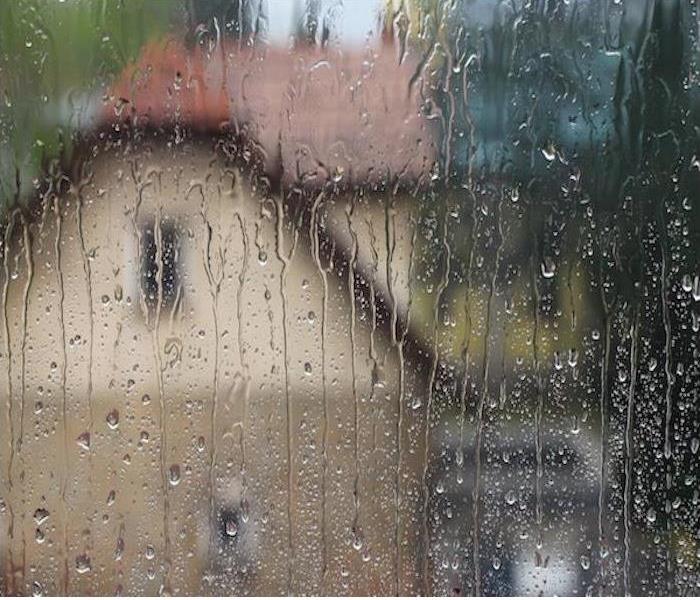6 Entrances to Seal from Water Leaks
8/9/2022 (Permalink)
Even a small leak in your home can cause major water damage. For this reason, it’s important to seal all entrances where water can enter the home. These leaks can occur in several places in your home and may not even be noticeable until it’s too late. That’s why you need to be vigilant and take preventative steps to stop these leaks before they start.
While one type of material used in a house in usually very weather resistant, houses are made up of many different types of materials. Most of the leaks in homes come from where these different materials meet. Sealant fills the gaps in these materials in order to create a waterproof barrier. These are six places where you need sealant to prevent water leaks.
Window
Due to their access to the outside, windows are common causes of water leaks into a home. To prevent these potentially dangerous leaks from occurring, sealant should be applied to the entire perimeter of the window, both inside and outside. The sealant will keep the water on the outside from sneaking its way in and, if any water does gets in, it will keep it from getting all the way in where it can do damage. If the window has trim, the bottom of that trim shouldn’t be caulked as it allows the water to trickle down and outside.
Door Frame
Door frames are a common entrance point for moisture to creep into the home. Sealant should be applied around the frame and threshold everywhere that’s flush, which is to say anywhere that there are two perfectly even adjoining surfaces. Sealant should also be applied to where the door frame and the trim or siding meet. Remember that there are several different layers that make up the door frame and you want to make sure that you seal all of them so water can’t get through.
Soffits and Fascia Boards
Soffits are the underside of a roof overhang while fascia are the front boards that gutters are typically attached to. Being outside and on the roof of the house, soffits and fascia are constantly around water making their protection of the utmost importance in order to protect the home from potential water leaks and eventual damage. The application of sealant behind these boards will not only ensure that water doesn’t leak through them and into the home but will allow them to last longer.
Where Deck Attaches to the House
It doesn’t matter what type of deck you have, a roof deck or a self-supporting deck, whenever two types of materials come together, there’s a chance that water can get through. Applying sealant to these areas is key to ensuring that water doesn’t get into your house causing damage. Another spot to be aware of is where the railing attaches to the house. Again, these are two different types of materials that come together which provides opportunity for water to sneak into the home.
Cracks and Gaps Along Concrete or Masonry
Any cracks or gaps that may appear along masonry should be sealed using transparent caulk to ensure that water doesn’t enter into the house. If there are any cracks or gaps in concrete, you should use gray caulking which is specially made for use on concrete. While filling in cracks or gaps in concrete should be done regardless of where it is, special attention should be paid to where the concrete meets with other materials which is susceptible to water leaks.
Flashing
The purpose of flashing is to bridge any gaps where two materials come together like where the roof and chimney connect or where a deck connects with the house. This strip has its own seams where two different materials come together making it susceptible to potential water damage. Wherever flashing is in your house, sealant should be applied. And while you’re at it, check to see if any of the flashing needs to be replaced.
The smallest of water leaks has the potential to create major water damage in your home. Applying sealant on these six vulnerable areas on the house will help to prevent any potential leaks from occurring. If water damage does occur in your home, contact the professionals at SERVPRO to correct the situation.

 24/7 Emergency Service
24/7 Emergency Service
